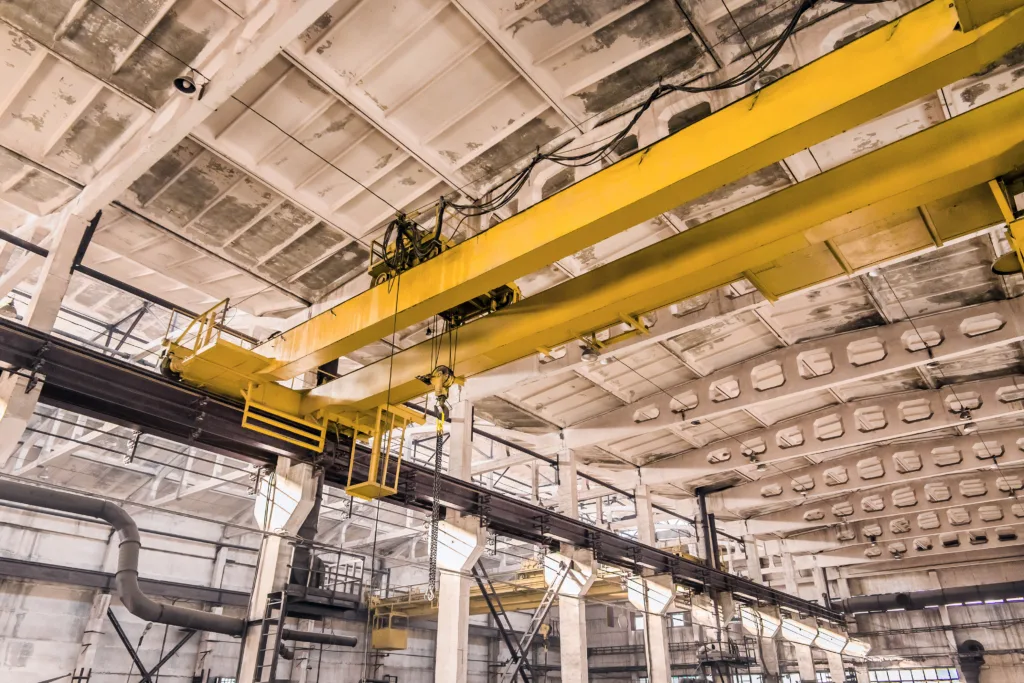Unpacking the Mechanics of Overhead Factory Cranes
At Handling Systems International (HSI), we understand that the backbone of any efficient production, assembly, or logistics operation often relies on the adept handling of materials. Overhead Factory Cranes, commonly referred to as Bridge Cranes or Electric Overhead Traveling (EOT) cranes, are at the heart of these processes. Designed to optimize both space and time, EOT cranes are crucial for seamless material movement across various industrial scenarios.
How EOT Cranes Operate in Industrial Settings
An EOT crane typically operates along two parallel runway beams, effectively spanning the width of the workshop. This arrangement allows for what we call “down-shop” travel, facilitating the movement of goods along the shop’s length. To power these movements, electric power is transferred from a stationary source to the moving crane bridge, primarily through a Conductor Bar System aligned with the runway beams. While this is the most common method, alternatives like Cable Festoons, Cable Chains, or Cable Reels are also used depending on specific environmental needs or operational preferences.
The energy from the runway conductors is transferred to the crane’s bridge, enabling the hoist trolley—or trolleys—to move perpendicularly to the runways. This movement is pivotal, positioning the hoist directly over the goods for precise handling. The hoist then lifts and transports the goods, powered and controlled either via a push-button pendant or a radio remote control. This precise coordination between the bridge drive wheels, hoist trolley, and the hoist ensures efficient transport of goods to their intended destination.
Critical Components of Overhead Cranes
Understanding the components of overhead cranes highlights the sophistication behind these powerful machines. The energy and data transmission systems, for example, are vital for safe, reliable, and efficient crane operations. These systems are meticulously configured to accommodate varying sizes and weights of goods, ensuring movements are conducted at necessary speeds and with precise control. Moreover, modern cranes may incorporate auxiliary features like lighting, anti-collision systems, positioning aids, and in some instances, automated functions. These enhancements are designed to meet the specialized demands of today’s diverse industrial environments, pushing the boundaries of what traditional lifting solutions can achieve.
At HSI, our commitment to innovation and quality ensures that our overhead crane solutions, including the versatile EOT cranes, are not just equipment, but pivotal elements that drive the success of your operations. Whether you’re looking to upgrade your existing setup or need a custom solution tailored to your unique needs, our team is here to elevate your operations with some of the most advanced lifting technologies available today.
For more insights into how our cranes can transform your operational capabilities, visit us at [HSI Website] or contact our support team for detailed consultation and support.

